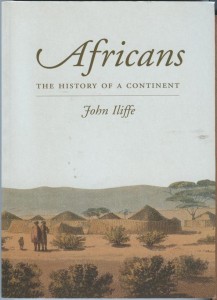|
Reviewed by Daniel C. Palm, Ph.D., Associate Professor of Political Science and Department Chair, Azusa Pacific University One continent continues to astound us with the magnitude of its difficulties. How is it, students often ask, that slaughter on the scale of that which occurred in Rwanda—and continues to occur in Sudan and the Democratic Republic of Congo—is allowed to take place? Why do childhood diseases and levels of malnutrition long forgotten in the developed world continue to take the lives of African nations’ most precious resource in staggering numbers? Why did anything resembling a free and fair multi-party, multi-ethnic election in Africa remain a dream until the early 1990s? To begin to understand the totality of the crisis one needs a sweeping yet authoritative guide to African history, and the present volume, here in its second edition, succeeds admirably. Take note of the book’s title. This is indeed population history—a book designed around Africans themselves, and how their development over many centuries has been affected by their continent’s exceptionally difficult physical geography, their regional migrations, and the influences and forces exerted upon them from abroad. Alongside this project, author John Iliffe suggests two important sub-themes as essential to understanding Africa. The first lies in the continent’s only partial isolation from the great powers to its north and east, and its peoples’ resulting willingness to accept their ideas, religious faiths, and technologies, while at the same time exporting slaves en masse, from ancient times through the mid-19th century. His second sub-theme concerns the suffering that he sees as central to African existence and the customs and ideologies that emerge from the need to explain it. In Africans: The History of a Continent, our author tells Africa’s history in fifteen chapters, beginning with three devoted to the continent’s diverse and ever-changing physical features, and the impact of agriculture and metals on its earliest populations. He beautifully summarizes Africa’s Egyptian, Nubian, and Carthaginian societies, explaining why these monumental cultures, for all their grandeur, had relatively little impact on sub-Saharan regions. The introduction of Christianity followed 800 years later by Islam receive attention in a separate chapter, and we learn how both universalist faiths were adapted to the needs of central and southern Africans over ensuing centuries. Readers interested in Islam’s present resurgence will find this chapter well worth their time, alongside Iliffe’s brief but illuminating attention to the rise of one of the well-springs of modern Islamic radicalism, Egypt’s Muslim Brotherhood. Every college student knows at least something of Africa’s colonization by western Europeans, the late 19th century race for territory in particular. Few, however, can speak to the centuries of earlier conquest and colonization efforts in Africa by Africans, carried out by stronger, expansive and organized populations against their less numerous, weaker neighbors. Iliffe devotes no fewer than five chapters to African and European colonial activity across the continent, ably explaining their interaction and the pitfalls of transition to post-colonial independence. Likewise his chapter on the Atlantic slave trade considers not only the event itself, but the confluence of European maritime advances, New World agriculture, and indigenous African practices that together made possible three and a half centuries of tragedy for individual Africans and left a gaping hole in west African demographics. On this last point the author is at his best, exploring how this wholesale population loss hugely disrupted the development of a large portion of the continent, as well as describing the sometimes surprising political consequences of Britain’s abolition of the trade. This is a scholarly volume that will be fully accessible to students of history, and to those seeking a cogent guide to what lies behind Africa’s 20th and 21st century political tragedies. Iliffe deserves great credit for making sense of an incredibly complex continent, and for his elegant prose and organization. His book would work well as an anchor text in a course on African history, and equally well in a course on the politics of developing countries, providing as it does solid background on native political customs, post-colonial governments, post-apartheid democratization, and the recent challenge of radicalized Islam. A future third edition of this book could include attention to China’s steadily increasing presence on the continent, and the inevitable complications that will come in time to African politics from that interaction. And many readers would welcome the author’s thoughts on the politics behind the devastation of Sudan’s Darfur population. Most of all, one may hope that the author will be able to report that advances in medicine, communication, banking, and international trade will have allowed Africans to overcome at least some of the obstacles to their development imposed by nature and history. |


 Africans: The History of a Continent
Africans: The History of a Continent